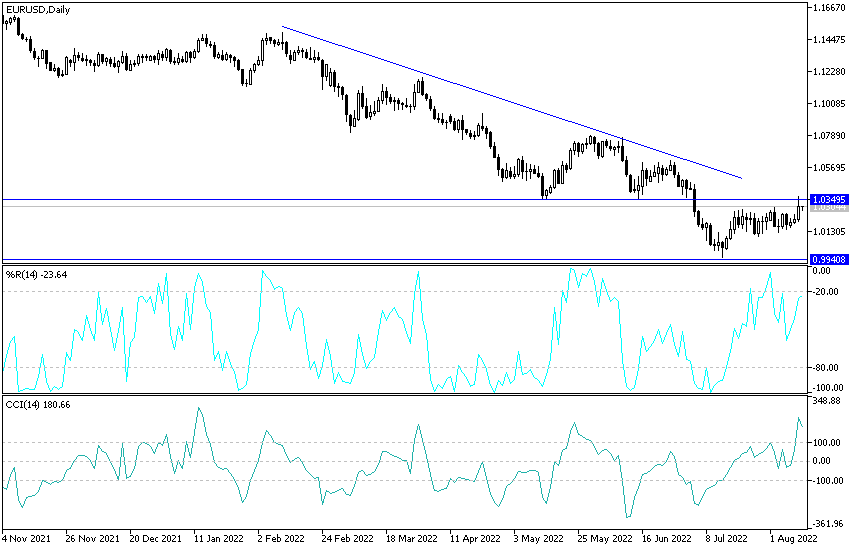There is no doubt that the decline in US inflation rates stronger than expected contributed a lot to the decline of the US dollar against the rest of the other major currencies. The share of the EUR/USD currency pair rose quickly, reaching the resistance level of 1.0368, the highest for the currency pair in a month. The rebound was due to the investors’ view of the US inflation figures, which might impede the path of a strong tightening of the US interest rate hike. The EUR/USD pair is stabilizing around the 1.0300 level at the time of writing, awaiting a new round of important US economic data.
All in all, the EUR/USD exchange rate jumped to a double level of technical resistance on the charts after both official measures of US inflation came in lower than market expectations for July, dragging down US bond yields and the dollar more than recent highs. Falling gasoline prices have lowered the overall inflation rate in the US from 9.1% to 8.5% last month
How does the economy affect the markets?.
Economists had expected that metric to fall to 8.7% although if gasoline and natural gas prices fell, increases in the cost of electricity, food and housing would weigh on the metric. Meanwhile, the top rate of core inflation rose 5.9% unchanged last month in the face of expectations for an increase of 6.1% after declines in airline tickets, used cars and trucks, telecommunications and clothing prices offset increases in other categories.
Commenting on this, Biban Ray, FX Analyst at CIBC Capital Markets says, “The impulse in commodity-driven inflation is probably going down, but not so much from the services side (which tends to be more flat).” He noted that the 50-day moving average is an area. Possible short-term resistance of the price of the euro against the dollar. Analysts and economists warned on Wednesday that the data was unlikely to prevent the Federal Reserve from moving toward the interest rate forecast it set in June, which envisions a US interest rate of between 3% and 3.5% by the end of the year.
“The continued decline in gasoline will mean the headline rate drops further in August, but core inflation is likely to be more steady due to labor costs and will keep the Fed in a tightening mode,” says James Knightley, chief economist at ING. As Knightley cautioned after reviewing the data: “Core inflation remains on an upward trajectory due to rising housing rental costs and service sector inflation pressures. Wages are the largest cost input to the service sector.”
Wednesday’s numbers were closely followed by other data from the Bureau of Labor Statistics that on Tuesday indicated that US labor costs, or individual labor costs, rose by more than double during the second quarter and for the second consecutive quarter. This data is in part a reflection of higher wage growth rates that were also depicted rising at an accelerating pace in the US Non-Farm Payrolls report released last week.
Euro forecast against the dollar:
- The recent gains for the EUR/USD pair are a first step towards breaking the downside trend.
- The currency pair will need to move towards the 1.0400 and 1.0485 resistance levels to confirm that according to the performance on the daily chart.
- On the downside, the euro dollar price returned towards the support levels 1.0225 and 1.0155, ending the bullish aspirations.
- We prefer to sell EURUSD from every bullish level.
- Today, the currency pair will await the release of the US Producer Price Index as well as the number of jobless claims
Ready to trade our daily Forex forecast? Here’s a list of some of the best Forex brokers to check out.

.

